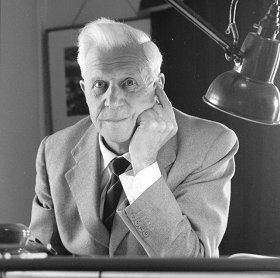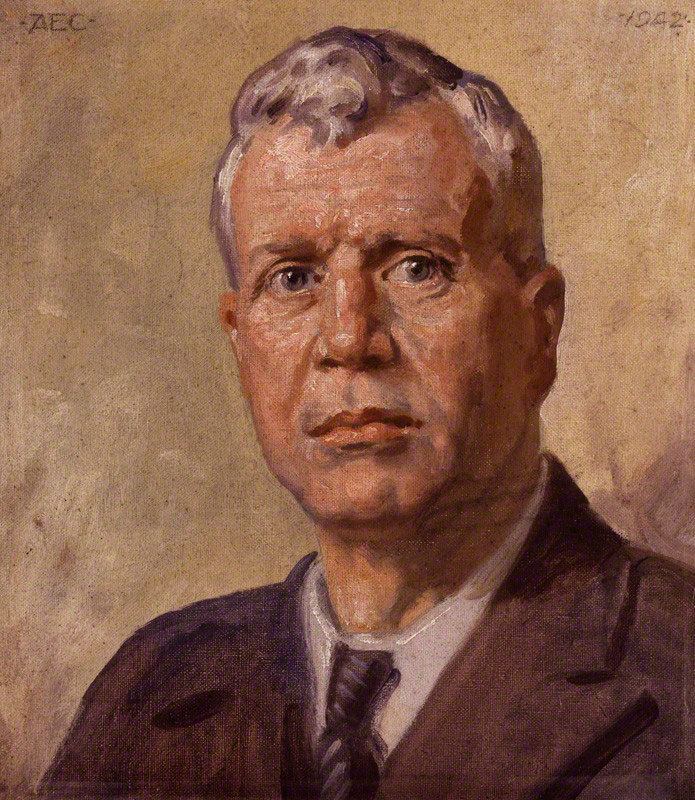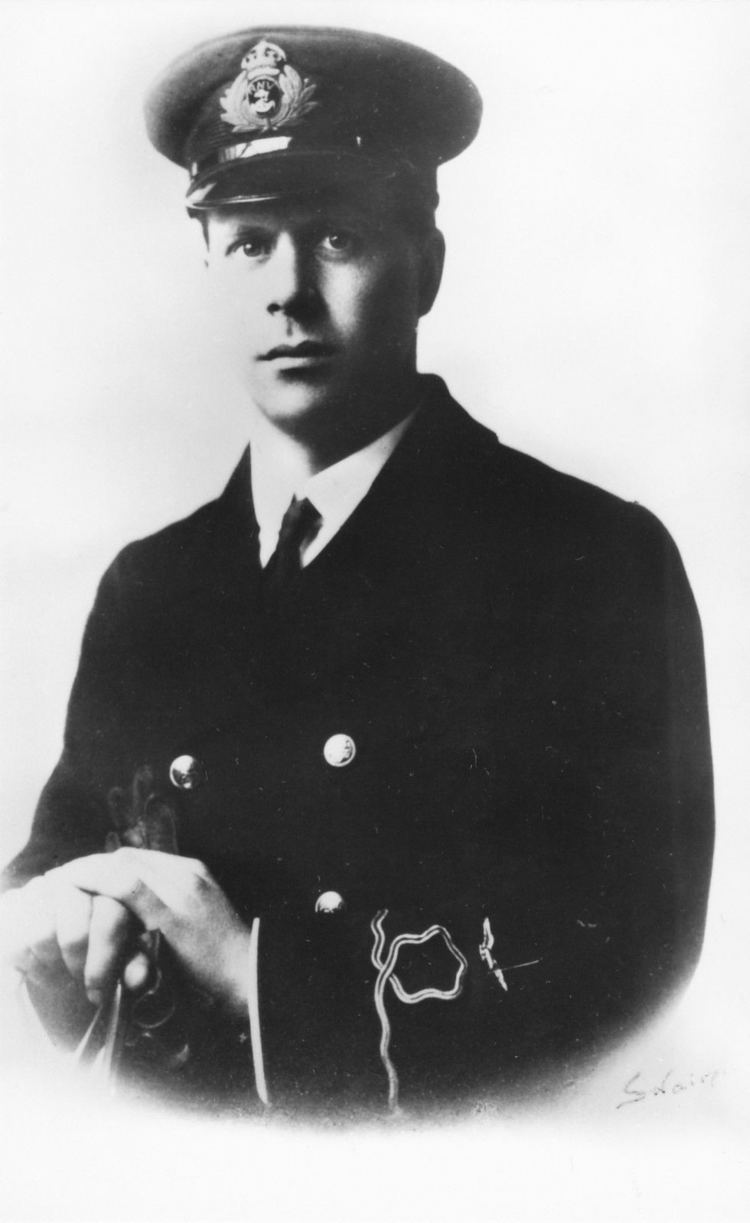Name Barnes Wallis Nationality British | ||
 | ||
Full Name Barnes Neville Wallis Spouse Molly Bloxam (m. 1925–1979) Aircraft designed Similar People Guy Gibson, Paul Brickhill, Michael Redgrave | ||
Barnes wallis experiment slow motion video
Sir Barnes Neville Wallis (26 September 1887 – 30 October 1979), was an English scientist, engineer and inventor. He is best known for inventing the bouncing bomb used by the Royal Air Force in Operation Chastise (the "Dambusters" raid) to attack the dams of the Ruhr Valley during World War II. The raid was the subject of the 1955 film The Dam Busters, in which Wallis was played by Michael Redgrave. Among his other inventions were his version of the geodetic airframe and the earthquake bomb.
Contents
- Barnes wallis experiment slow motion video
- Barnes wallis big ideas
- Career
- Aircraft design
- Bomb design
- After the war
- Personal life
- In fiction
- Memorials
- Archives
- References

Barnes wallis big ideas
Career

Barnes Wallis was born in Ripley, Derbyshire to Charles William George Robinson Wallis (1859-1945) and his wife Edith Eyre Wallis nee Ashby (1859-1911). He was educated at Christ's Hospital in Horsham and Haberdashers' Aske's Hatcham Boys' Grammar School in southeast London, leaving school at seventeen to start work in January 1905 at Thames Engineering Works at Blackheath, southeast London. He subsequently changed his apprenticeship to J. Samuel White's, the shipbuilders based at Cowes on the Isle of Wight. He originally trained as a marine engineer and in 1922 he took a degree in engineering via the University of London External Programme.

He left J. Samuel White's in 1913 when an opportunity arose for him to work on airship design and then aircraft design. He worked for Vickers – later part of Vickers-Armstrongs and then part of the British Aircraft Corporation – until his retirement in 1971.
Aircraft design

His many achievements include the first use of geodetic (also known as geodesic) design in engineering and in the gasbag wiring of Vickers' R100 in 1930, which, at the time, was the largest airship ever designed. He also pioneered, along with John Edwin Temple, the use of light alloy and production engineering in the structural design of the R100. Nevil Shute Norway was the chief calculator for the project, responsible for calculating the stresses on the frame.

Despite a better-than-expected performance and a successful return flight to Canada in 1930, the R100 was broken up following the crash in northern France of its "sister" ship, the R101 (which was designed and built by a team from the Government's Air Ministry). The later destruction of the Hindenburg led to the abandonment of airships as a mode of mass transport.

By the time of the R101 crash, Wallis had moved to the Vickers aircraft factory at the Brooklands motor circuit and aerodrome between Byfleet and Weybridge in Surrey. The pre-war aircraft designs of Rex Pierson, the Wellesley, the Wellington and the later Warwick and Windsor all employed Wallis's geodetic design in the fuselage and wing structures.
The latter was one of the most robust airframes ever developed, and pictures of its skeleton largely shot away, but still sound enough to bring its crew home safely, are still impressive. The geodetic construction offered a light and strong airframe (compared to conventional designs), with clearly defined space within for fuel tanks, payload and so on. However the technique was not easily transferred to other aircraft manufacturers, nor was Vickers able to build other designs in factories tooled for geodetic work.
Bomb design
After the outbreak of the Second World War in Europe in 1939, Wallis saw a need for strategic bombing to destroy the enemy's ability to wage war and he wrote a paper entitled "A Note on a Method of Attacking the Axis Powers". Referring to the enemy's power supplies, he wrote (as Axiom 3): "If their destruction or paralysis can be accomplished they offer a means of rendering the enemy utterly incapable of continuing to prosecute the war". As a means to do this, he proposed huge bombs that could concentrate their force and destroy targets which were otherwise unlikely to be affected. Wallis's first super-large bomb design came out at some ten tonnes, far more than any current bomber could carry. Rather than drop the idea, this led him to suggest a plane that could carry it - the "Victory Bomber".
Early in 1942, Wallis began experimenting with skipping marbles over water tanks in his garden, leading to his April 1942 paper "Spherical Bomb — Surface Torpedo". The idea was that a bomb could skip over the water surface, avoiding torpedo nets, and sink directly next to a battleship or dam wall as a depth charge, with the surrounding water concentrating the force of the explosion on the target. A crucial innovation was the addition of backspin, which caused the bomb to trail behind the dropping aircraft (decreasing the chance of that aircraft being damaged by the force of the explosion below), increased the range of the bomb, and also prevented it from moving away from the target wall as it sank. After some initial scepticism, the Air Force accepted Wallis's bouncing bomb (codenamed Upkeep) for attacks on the Möhne, Eder and Sorpe dams in the Ruhr area. The raid on these dams in May 1943 (Operation Chastise) was immortalised in Paul Brickhill's 1951 book The Dam Busters and the 1955 film of the same name. The Möhne and Eder dams were successfully breached, causing damage to German factories and disrupting hydro-electric power.
After the success of the bouncing bomb, Wallis was able to return to his huge bombs, producing first the Tallboy (6 tonnes) and then the Grand Slam (10 tonnes) deep-penetration earthquake bombs. These were not the same as the 5-tonne "blockbuster" bomb, which was a conventional blast bomb. Although there was still no aircraft capable of lifting these two bombs to their optimal release altitude, they could still be dropped from a lower height, entering the earth at supersonic speed and penetrating to a depth of 20 metres before exploding. They were used on strategic German targets such as V-2 rocket launch sites, the V-3 supergun bunker, submarine pens, and other reinforced structures, large civil constructions such as viaducts and bridges, as well as the German battleship Tirpitz. They were the forerunners of modern bunker-busting bombs.
After the war
Having been dispersed with the Design Office from Brooklands to the nearby Burhill Golf Club in Hersham, after the Vickers factory was badly bombed in September 1940, Wallis returned to Brooklands in November 1945 as Head of the Vickers-Armstrongs Research & Development Department and was based in the former motor circuit's 1907 Clubhouse. Here he and his staff worked on many futuristic aerospace projects including supersonic flight and "swing-wing" technology (later used in the Panavia Tornado and other aircraft types). A massive 19,533 square feet (1,814.7 m2) Stratosphere Chamber (which was the world's largest facility of its type), was designed and built beside the Clubhouse by 1948 and became the focus for much R&D work under Wallis's direction in the 1950s and 1960s, including research into supersonic aerodynamics that contributed to the design of Concorde, before finally closing by 1980. This unique structure was restored at Brooklands Museum thanks to a grant from the AIM-Biffa Fund in 2013 and was officially reopened by Dr Mary Stopes-Roe (Barnes Wallis' daughter) on 13 March 2014.
Although he did not invent the concept, Wallis did much pioneering engineering work to make the swing-wing concept functional. However, despite very promising wind tunnel and model work, his designs were not adopted. His early "Wild Goose", designed in the late 1940s, was intended to use laminar flow, but when this was shown to be unworkable, he developed the swing-wing further for the "Swallow", designed in the mid-1950s, which could have been developed for either military or civil applications. Both "Wild Goose" and "Swallow" were demonstrated by large (30 ft span) flying scale models without tailplanes; these trials were based at Predannack in Cornwall.
"Swallow" was cancelled in the round of cuts following the Sandys Defence White Paper in 1957, and in an attempt to gain American funding to continue the work, details of the project were passed to the USA. No such funds were made available and Wallis's design ideas were passed over in the UK in favour of the BAC TSR-2 (on which one of Wallis's sons worked) and Concorde. Wallis was quite critical of both the TSR-2 and Concorde, stating that a swing-wing design would be more appropriate. In the mid-1960s, TSR-2 was ignominiously scrapped in favour of the American F-111 – which had swing wings based on Wallis's work which the Americans had received – although this order was also subsequently cancelled.
In the 1950s, Wallis developed an experimental rocket-propelled torpedo codenamed HEYDAY. It was powered by compressed air and hydrogen peroxide, and had an unusual streamlined shape designed to maintain laminar flow over much of its length. Tests were conducted from Portland Breakwater in Dorset. The only surviving example is on display in Explosion! Museum of Naval Firepower at Gosport.
In 1955 Wallis agreed to act as a consultant to the project to build the Parkes Radio Telescope in Australia. Some of the ideas he suggested are the same as or closely related to the final design, including the idea of supporting the dish at its centre, the geodetic structure of the dish and the master equatorial control system. Unhappy with the direction it had taken, Wallis left the project halfway into the design study and refused to accept his £1,000 consultant's fee.
In the 1960s, Wallis also proposed using large cargo submarines to transport oil and other goods, thus avoiding surface weather conditions. Moreover, Wallis's calculations indicated, the power requirements for an underwater vessel were lower than for a comparable conventional ship and they could be made to travel at a much higher speed. He also proposed a novel hull structure which would have allowed greater depths to be reached, and the use of gas turbine engines in a submarine, using liquid oxygen. In the end, nothing came of Wallis's submarine ideas.
During the 1960s and into his retirement, he developed ideas for an "all-speed" aircraft, capable of efficient flight at all speed ranges from subsonic to hypersonic. In particular, his ideas and understanding of supersonic aerodynamics led to research that underwrote the design of the air intakes for Concorde's Olympus 593 engines. Using variable geometry air intakes, the Olympus engines were able to perform efficiently at all speeds from sub-sonic take-off and climb right through to supercruise at over Mach 2.
In the late 1950s, Wallis gave a lecture entitled "The strength of England" at Eton College, and continued to deliver versions of the talk into the early 1970s, presenting technology and automation as a way to restore Britain's dominance. He advocated nuclear-powered cargo submarines as a means of making Britain immune to future embargoes, and to make it a global trading power. He complained of the loss of aircraft design to the US, and suggested that Britain could dominate air travel by developing a small supersonic airliner capable of short take-off and landing.
The story described in The Dam Busters reflected the difficulties Wallis often faced in persuading those in authority or who controlled funding sources to support his ideas.
Following the terrible death toll of the aircrews involved in the Dambusters raid, he made a conscious effort never again to endanger the lives of his test pilots. His designs were extensively tested in model form, and consequently he became a pioneer in the remote control of aircraft.
Wallis became a Fellow of the Royal Society in 1945 and was knighted in 1968. Wallis also received an Honorary Doctorate from Heriot-Watt University in 1969.
He was awarded the sum of £10,000 for his war work from the Royal Commission on Awards to Inventors. His grief at the loss of so many airmen in the dams raid was such that Wallis donated the entire sum to Christ's Hospital School in 1951 to allow them to set up the RAF Foundationers' Trust, allowing the children of RAF personnel killed or injured in action to attend the school.
Personal life
In April 1922, Wallis met his cousin-in-law, Molly Bloxam, at a family tea party. She was only 17 and he was 35, and her father forbade them from courting. However, he allowed Wallis to assist Molly with her mathematics courses by correspondence, and they wrote some 250 letters, enlivening them with fictional characters such as "Duke Delta X". The letters gradually became personal, and Wallis proposed marriage on her 20th birthday. They were married on 23 April 1925, and remained so for 54 years until his death in 1979.
For 49 years, from 1930 until his death, Wallis lived with his family in Effingham, Surrey, and he is now buried at the local St. Lawrence Church together with his wife. His epitaph in Latin reads "Spernit Humum Fugiente Penna" (Severed from the earth with fleeting wing).
They had four children – Barnes (1926–2008), Mary (b. 1927), Elisabeth (b. 1933) and Christopher (1935–2006) – and also adopted Molly's sister's children when their parents were killed in an air raid.
His daughter Mary Eyre Wallis later married Harry Stopes-Roe, a son of Marie Stopes. His son Christopher Loudon Wallis was instrumental in the restoration of the watermill and its building on the Stanway Estate near Cheltenham, Gloucestershire.
In fiction
Wallis appears as a fictionalized character in Stephen Baxter's The Time Ships, the authorised sequel to The Time Machine. He is portrayed as a British engineer in an alternate history, where the First World War does not end in 1918, and Wallis concentrates his energies on developing a machine for time travel. As a consequence, it is the Germans who develop the bouncing bomb. His character and the WWII research lab are featured in the mystery British television series "Foyle's War" (Season four, part 2).
In Scarlet Traces: The Great Game, he is responsible for the development of the Cavorite weapon used to win the war on Mars after the departure of Cavor.
Memorials
Archives
The Science Museum at Wroughton, near Swindon, hold 105 boxes of papers of Barnes Wallis. The papers comprise design notes, photographs, calculations, correspondence and reports relating to Wallis's work on airships, including the R100; geodetic construction of aircraft; the bouncing bomb and deep penetration bombs; the "Wild Goose" and "Swallow" swing-wing aircraft; hypersonic aircraft designs and various outside contracts.
Two boxes of records, containing copies of key aeronautical papers written between 1940 and 1958, are held at the Churchill Archives Centre in Cambridge.
Other Barnes Wallis papers are also held at Brooklands Museum, the Imperial War Museum, London, Newark Air Museum and the Royal Air Force Museum in Hendon, Trinity College, Cambridge and Bristol, Leeds and Oxford universities. The RAF Museum also has a reconstruction of his post-war office at Brooklands.
